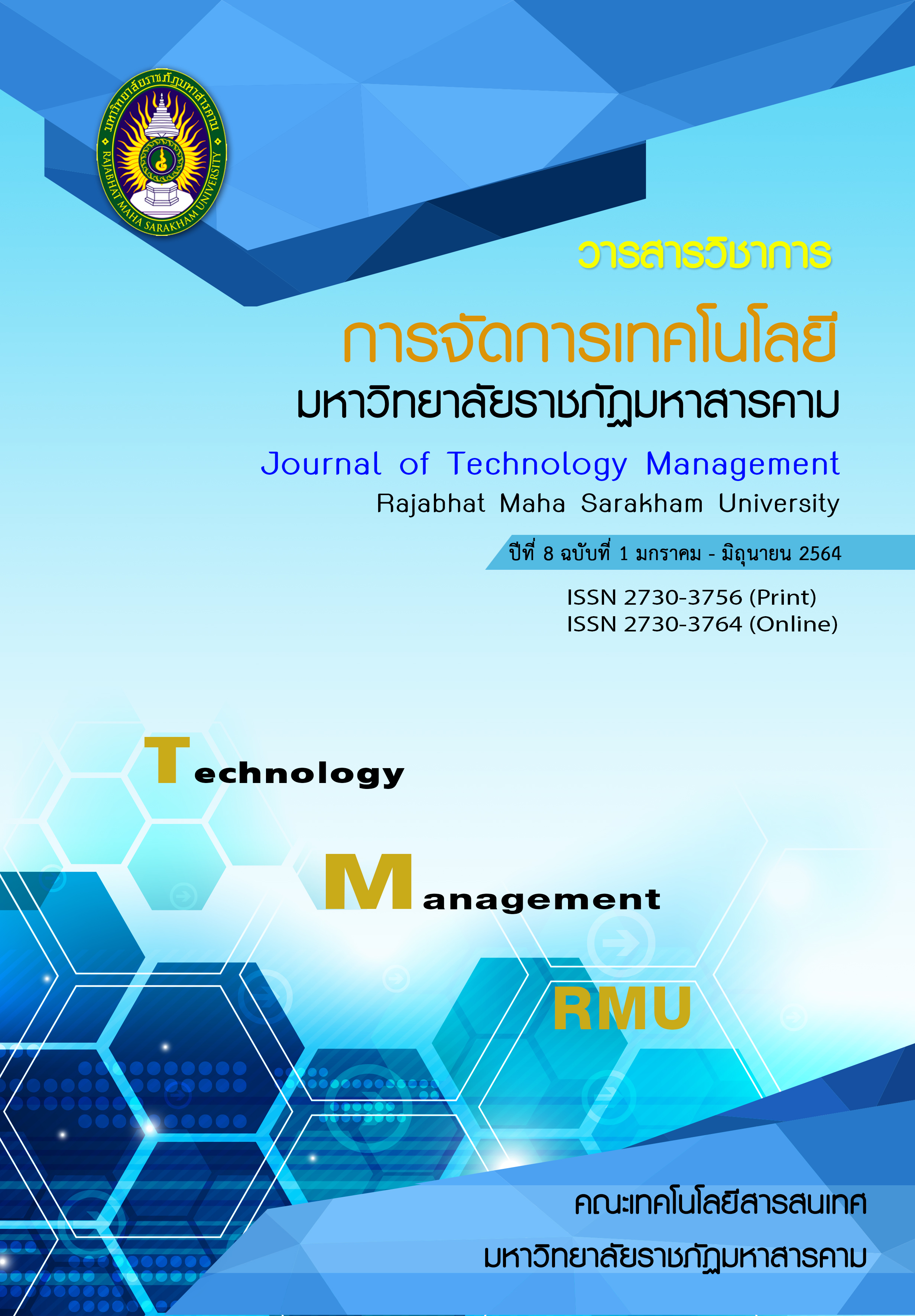ระบบบันทึกเวลาเข้าออกปฏิบัติงานของพนักงานโดยใช้การจดจำใบหน้า
Main Article Content
บทคัดย่อ
Abstract
The purposes of the research were 1) to application of face recognition technology
for recording time in - out of employees and reduce the waiting time for record working time,
2) study and measure the performance of the factors of CCTV cameras and degrees in the installation of CCTV cameras using to face detect and comparison of face recognition between Eigenface recognition and Fisher face recognition techniques that were suitable for the company in case study, and 3) study the satisfaction of the users of the employee time attendance system towards face recognition technology systems. The target group of this research was 50 sales staff. The research tools of the study were as follows: Time Attendance Program for recording
the in-out working time of the employees, the form of quality assessment evaluated by experts, and a questionnaire on the satisfaction of a target group. The statistics used in this study were mean and standard deviation.
The result of the research showed that 1) after the application of face recognition technology for recording time in - out of employees, the system was capable of operationalizing two functional parts: face scanning performed through CCTV cameras using the Haar-like technique, and time attendance program for data management, 2) the performance of the
face detects and factors of CCTV cameras by 10 experts was in the highest laver at
= 4.36, S.D. = 0.70. In terms of face recognition, the performance of Eigenface recognition, 92.15%, was higher than that of Fisher face recognition, 91.21%. In terms of Time Attendance Program for data management, the result discovered the most effective index on determining camera factors for recording images was the value of the light exposure to 90% at maximum
with focal distance of 278/100. The image size, the face ratio, and the image orientation
were applicable in both horizontal and vertical lines. The best position of camera installation
was 45 degree. And 3) The final result of the research was that the satisfaction of the users towards the system appeared in the high level at = 4.56 and S.D. = 0.60.
Keywords: Face detection, Face recognition, Time attendance recording, Employees
Article Details
เอกสารอ้างอิง
Computer Vision and Pattern Recognition, 1-9.
[2] Viola, P., Jones, M. (2004). Robust real-time face detection. International Journal of Computer Vision, 5(2),
137-154.
[3] Tolba, A.S., El-Baz, A. H., & El-Harby, A. A. (2005). Face recognition: a literature review, International
Journal of Signal Processing, 2(2), 88-103.
[4] Belhumeur, P. N., João, P. H., David, J.K. (1997). Eigenfaces vs. Fisherfaces Recognition using Class Specific
Linear Projection. IEEE Transactions on pattern analysis and machine intelligence, 19(7), 711-720
[5] Wang, H., Kang, B., Kim, D. (2013). PFW: A face database in the wild for studying face Identification and
Verification in uncontrolled environment. 2nd IAPR Asian Conference on Pattern Recognition. Naha.
Japan. (pp. 356-360).
[6] วิทยา อินทร์สอน, ปัทมาพร ท่อชู และภาณุเมศวร์ สุขศรีศิริวัชร. (2558). ความสูญเสีย 7 ประการ ใน
กระบวนการผลิต (7 Wastes of Production Process). สืบค้นเมื่อ 13 กันยายน 2561, สืบค้นจาก
http://www.thailandindustry.com/onlinemag/view2.php?id=106§ion=16&issues=10
[7] Likert, R. (1967). The Method of Constructing and Attitude Scale. In Reading in Fishbeic, M (Ed.). Attitude
Theory and Measurement, 90-95.
[8] Roshan, J.G. (2013). Smart Attendance using Real Time Face Recognition (SMART-FR). Department
of Electronic and Computer Engineering, Sri Lanka Institute of Information Technology (SLIIT).
Malabe. Sri Lanka. 41-44.
[9] สุวัฒน์ บันลือ และ ขนิษฐา อินทะแสง. (2563). ประสิทธิภาพระบบตรวจสอบการเข้าชั้นเรียนด้วยภาพใบหน้าโดยใช้เทคนิค
แอลบีพี. วารสารมหาวิทลัยราชภัฎร้อยเอ็ด, 14(1), 147-158.


